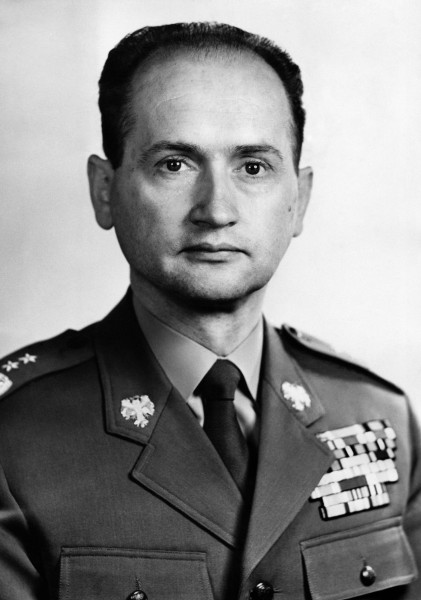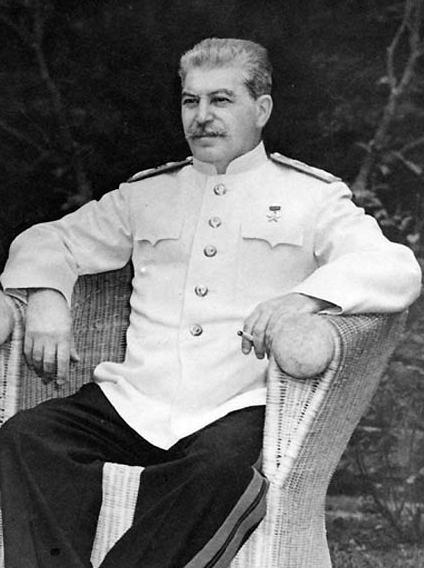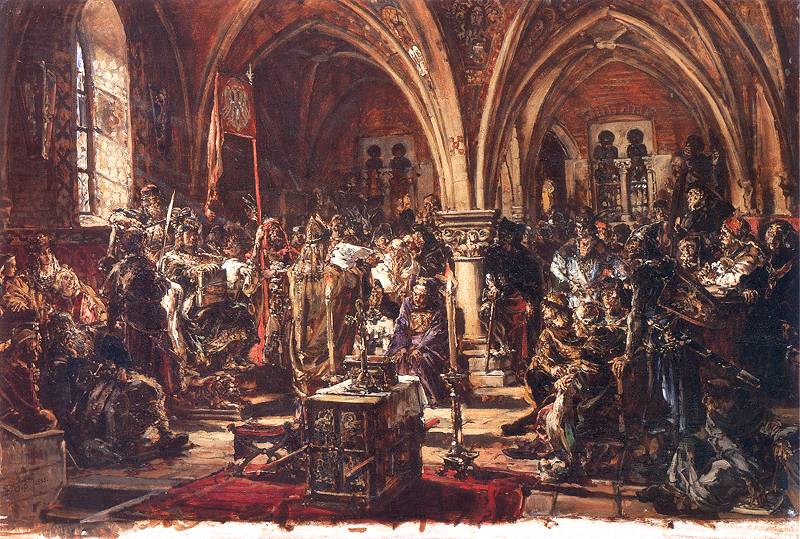|
Polish People's Republic
The Polish People's Republic (1952–1989), formerly the Republic of Poland (1947–1952), and also often simply known as Poland, was a country in Central Europe that existed as the predecessor of the modern-day democratic Republic of Poland. With a population of approximately 37.9 million near the end of its existence, it was the second most-populous communist government, communist and Eastern Bloc country in Europe. It was also where the Warsaw Pact was founded. The largest city and capital was Warsaw, followed by the industrial city of Łódź and cultural city of Kraków. The country was bordered by the Baltic Sea to the north, the Soviet Union to the east, Czechoslovak Socialist Republic, Czechoslovakia to the south, and East Germany to the west. The Polish People's Republic was a unitary state with a Marxist–Leninist government established in the country after the Red Army's takeover of Polish territory from Occupation of Poland (1939–1945), German occupation in ... [...More Info...] [...Related Items...] OR: [Wikipedia] [Google] [Baidu] |
Warsaw Pact
The Warsaw Pact (WP), formally the Treaty of Friendship, Co-operation and Mutual Assistance (TFCMA), was a Collective security#Collective defense, collective defense treaty signed in Warsaw, Polish People's Republic, Poland, between the Soviet Union and seven other Eastern Bloc List of non-communist socialist states, socialist republics in Central and Eastern Europe in May 1955, during the Cold War. The term "Warsaw Pact" commonly refers to both the treaty itself and its resultant military alliance, the Warsaw Pact OrganisationPage 22, �NATO and OSCE, Partners or Rivals?��, Edward Killham (WPO) (also known as ‘Warsaw Treaty Organization’ (‘WTO’)). The Warsaw Pact was the military complement to the Comecon, Council for Mutual Economic Assistance (Comecon), the economic organization for the Eastern Bloc states. Dominated by the Soviet Union, the Warsaw Pact was established as a balance of power or counterweight to the NATO, North Atlantic Treaty Organization (NATO) and ... [...More Info...] [...Related Items...] OR: [Wikipedia] [Google] [Baidu] |
Wojciech Jaruzelski
Wojciech Witold Jaruzelski ( ; ; 6 July 1923 – 25 May 2014) was a Polish military general, politician and ''de facto'' leader of the Polish People's Republic from 1981 until 1989. He was the First Secretary of the Polish United Workers' Party between 1981 and 1989, making him the last leader of the Polish People's Republic. Jaruzelski served as Prime Minister of Poland, Prime Minister from 1981 to 1985, the Polish Council of State, Chairman of the Council of State from 1985 to 1989 and briefly as President of Poland from 1989 to 1990, when the office of President was restored after 37 years. He was also the last commander-in-chief of the Polish People's Army, which in 1990 became the Polish Armed Forces. Born to Polish nobility in Kurów in eastern (then-central) Poland, Jaruzelski was deported with his family to Siberia by the NKVD after the invasion of Poland. Assigned to forced labour in the Siberian wilderness, he developed photokeratitis which forced him to wear protect ... [...More Info...] [...Related Items...] OR: [Wikipedia] [Google] [Baidu] |
Warsaw
Warsaw, officially the Capital City of Warsaw, is the capital and List of cities and towns in Poland, largest city of Poland. The metropolis stands on the Vistula, River Vistula in east-central Poland. Its population is officially estimated at 1.86 million residents within a Warsaw metropolitan area, greater metropolitan area of 3.27 million residents, which makes Warsaw the List of cities in the European Union by population within city limits, 6th most-populous city in the European Union. The city area measures and comprises List of districts and neighbourhoods of Warsaw, 18 districts, while the metropolitan area covers . Warsaw is classified as an Globalization and World Cities Research Network#Alpha 2, alpha global city, a major political, economic and cultural hub, and the country's seat of government. It is also the capital of the Masovian Voivodeship. Warsaw traces its origins to a small fishing town in Masovia. The city rose to prominence in the late 16th cent ... [...More Info...] [...Related Items...] OR: [Wikipedia] [Google] [Baidu] |
Polish People
Polish people, or Poles, are a West Slavic ethnic group and nation who share a common History of Poland, history, Culture of Poland, culture, the Polish language and are identified with the country of Poland in Central Europe. The preamble to the Constitution of the Republic of Poland defines the Polish nation as comprising all the citizenship, citizens of Poland, regardless of heritage or ethnicity. The majority of Poles adhere to Roman Catholicism. The population of self-declared Poles in Poland is estimated at 37,394,000 out of an overall population of 38,512,000 (based on the 2011 census), of whom 36,522,000 declared Polish alone. A wide-ranging Polish diaspora (the ''Polish diaspora, Polonia'') exists throughout Eurasia, the Americas, and Australasia. Today, the largest urban concentrations of Poles are within the Warsaw metropolitan area and the Katowice urban area. Ethnic Poles are considered to be the descendants of the ancient West Slavic Lechites and other tribes t ... [...More Info...] [...Related Items...] OR: [Wikipedia] [Google] [Baidu] |
Polish Language
Polish (, , or simply , ) is a West Slavic languages, West Slavic language of the Lechitic languages, Lechitic subgroup, within the Indo-European languages, Indo-European language family, and is written in the Latin script. It is primarily spoken in Poland and serves as the official language of the country, as well as the language of the Polish diaspora around the world. In 2024, there were over 39.7 million Polish native speakers. It ranks as the sixth-most-spoken among languages of the European Union. Polish is subdivided into regional Dialects of Polish, dialects. It maintains strict T–V distinction pronouns, Honorifics (linguistics), honorifics, and various forms of formalities when addressing individuals. The traditional 32-letter Polish alphabet has nine additions (, , , , , , , , ) to the letters of the basic 26-letter Latin alphabet, while removing three (x, q, v). Those three letters are at times included in an extended 35-letter alphabet. The traditional set compri ... [...More Info...] [...Related Items...] OR: [Wikipedia] [Google] [Baidu] |
Hybrid Regime
A hybrid regime is a type of political system often created as a result of an incomplete democratic transition from an authoritarian regime to a Democracy, democratic one (or vice versa). Hybrid regimes are categorized as having a combination of autocratic features with democratic ones and can simultaneously hold political repressions and regular elections. According to some definitions and measures, hybrid regimes are commonly found in developing countries with abundant natural resources such as petro-states. Although these regimes experience civil unrest, they may be relatively stable and tenacious for decades at a time. There has been a rise in hybrid regimes since the end of the Cold War. The term ''hybrid regime'' arises from a polymorphic view of political regimes that oppose the dichotomy of autocracy or democracy. Modern scholarly analysis of hybrid regimes focuses attention on the decorative nature of democratic institutions (elections do not lead to a change of power, d ... [...More Info...] [...Related Items...] OR: [Wikipedia] [Google] [Baidu] |
Martial Law In Poland
Martial law in Poland () existed between 13 December 1981 and 22 July 1983. The Polish United Workers' Party, government of the Polish People's Republic drastically restricted everyday life by introducing martial law and a military junta in an attempt to counter political opposition, in particular the Solidarity (Polish trade union), Solidarity movement. Since the late 1970s, Poland had been in a deep economic recession. Edward Gierek, First Secretary of the Polish United Workers' Party (PZPR), had obtained a series of large loans from foreign creditors to achieve better economic output. This instead resulted in a domestic crisis. Essential goods were heavily rationing, rationed, which acted as a stimulus to establishing the first anticommunist trade union in the Eastern Bloc, known as Solidarity (), in 1980. Gierek, who permitted the trade union to appear per the Gdańsk Agreement, was dismissed from his post less than a month later and confined to house arrest. Following countl ... [...More Info...] [...Related Items...] OR: [Wikipedia] [Google] [Baidu] |
Stalinism
Stalinism (, ) is the Totalitarianism, totalitarian means of governing and Marxism–Leninism, Marxist–Leninist policies implemented in the Soviet Union (USSR) from History of the Soviet Union (1927–1953), 1927 to 1953 by dictator Joseph Stalin and in Satellite state#Post-World War II, Soviet satellite states between 1944 and 1953. Stalinism included the creation of a Rule of man, one man totalitarian police state, rapid Industrialization in the Soviet Union, industrialization, the theory of socialism in one country, forced Collective farming, collectivization of agriculture, intensification of the class struggle under socialism, intensification of class conflict, a Joseph Stalin's cult of personality, cult of personality, and subordination of the interests of foreign Communist party, communist parties to those of the Communist Party of the Soviet Union, which Stalinism deemed the leading Vanguardism, vanguard party of communist revolution at the time. After Stalin's dea ... [...More Info...] [...Related Items...] OR: [Wikipedia] [Google] [Baidu] |
Marxist–Leninist State
A communist state, also known as a Marxist–Leninist state, is a one-party state in which the totality of the power belongs to a party adhering to some form of Marxism–Leninism, a branch of the communist ideology. Marxism–Leninism was the state ideology of the Soviet Union, the Comintern after its Bolshevisation, and the communist states within the Comecon, the Eastern Bloc, and the Warsaw Pact. After the peak of Marxism–Leninism, when many communist states were established, the Revolutions of 1989 brought down most of the communist states; however, Communism remained the official ideology of the ruling parties of China, Cuba, Laos, Vietnam, and to a lesser extent, North Korea. During the later part of the 20th century, before the Revolutions of 1989, around one-third of the world's population lived in communist states. Communist states are typically authoritarian and are typically administered through democratic centralism by a single centralised communist party a ... [...More Info...] [...Related Items...] OR: [Wikipedia] [Google] [Baidu] |
Europe
Europe is a continent located entirely in the Northern Hemisphere and mostly in the Eastern Hemisphere. It is bordered by the Arctic Ocean to the north, the Atlantic Ocean to the west, the Mediterranean Sea to the south, and Asia to the east. Europe shares the landmass of Eurasia with Asia, and of Afro-Eurasia with both Africa and Asia. Europe is commonly considered to be Boundaries between the continents#Asia and Europe, separated from Asia by the Drainage divide, watershed of the Ural Mountains, the Ural (river), Ural River, the Caspian Sea, the Greater Caucasus, the Black Sea, and the waterway of the Bosporus, Bosporus Strait. "Europe" (pp. 68–69); "Asia" (pp. 90–91): "A commonly accepted division between Asia and Europe ... is formed by the Ural Mountains, Ural River, Caspian Sea, Caucasus Mountains, and the Black Sea with its outlets, the Bosporus and Dardanelles." Europe covers approx. , or 2% of Earth#Surface, Earth's surface (6.8% of Earth's land area), making it ... [...More Info...] [...Related Items...] OR: [Wikipedia] [Google] [Baidu] |
Coat Of Arms Of Poland
The coat of arms of Poland is the Coat of arms, heraldic symbol representing Poland. The current version was adopted in 1990. It is a white, crowned Eagle (heraldry), eagle with a golden beak and talons, on a red background. In Poland, the coat of arms as a whole is referred to as ''godło'' both in official documents and colloquial speech, despite the fact that other coats of arms are usually called a ''herb'' (e.g. the Nałęcz coat of arms, Nałęcz ''herb'' or the coat of arms of Finland). This stems from the fact that in Polish heraldry, the word ''godło'' (plural: ''godła'') means only a heraldic charge (in this particular case a white crowned eagle) and not an entire coat of arms, but it is also an archaic word for a national symbol of any sort. In later legislation only the ''herb'' retained this designation; it is unknown why. Legal basis The coat of arms of the Republic of Poland is described in two legal documents: the Constitution of the Republic of Poland of 1997 ... [...More Info...] [...Related Items...] OR: [Wikipedia] [Google] [Baidu] |
Sejm
The Sejm (), officially known as the Sejm of the Republic of Poland (), is the lower house of the bicameralism, bicameral parliament of Poland. The Sejm has been the highest governing body of the Third Polish Republic since the Polish People's Republic, transition of government in 1989. Along with the upper house of parliament, the Senate of Poland, Senate, it forms the national legislature in Poland known as Parliament of Poland#National Assembly, National Assembly (). The Sejm comprises 460 Member of parliament, deputies (singular or ) elected every four years by Universal suffrage, universal ballot. The Sejm is presided over by a Speaker of parliament, speaker, the "Marshal of the Sejm" (). In the Kingdom of Poland (1385–1569), Kingdom of Poland, the term ''Sejm'' referred to an entire two-Chambers of parliament, chamber parliament, comprising the Chamber of Deputies (), the Senate and the King. It was thus a three-estate parliament. The 1573 Henrician Articles strengthe ... [...More Info...] [...Related Items...] OR: [Wikipedia] [Google] [Baidu] |







